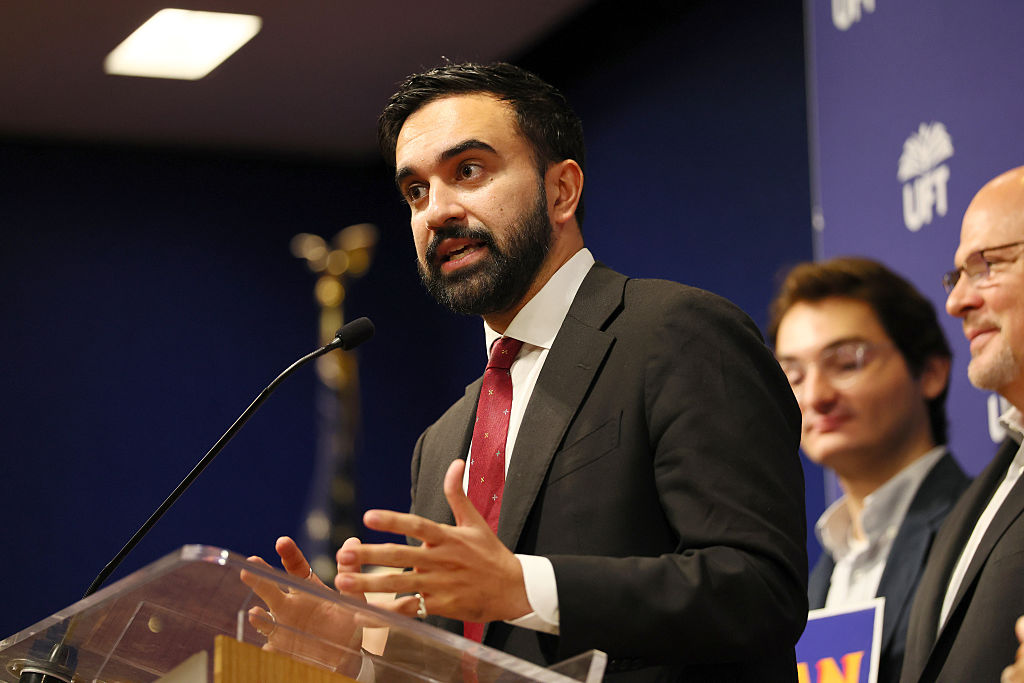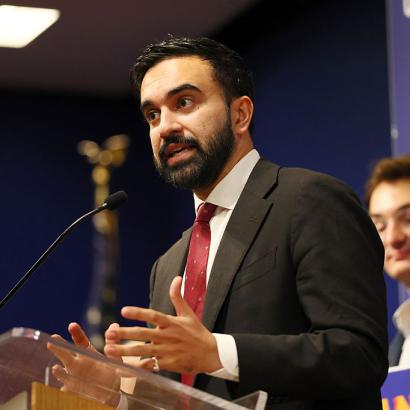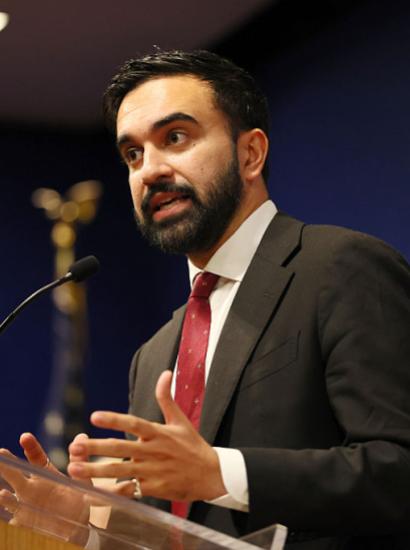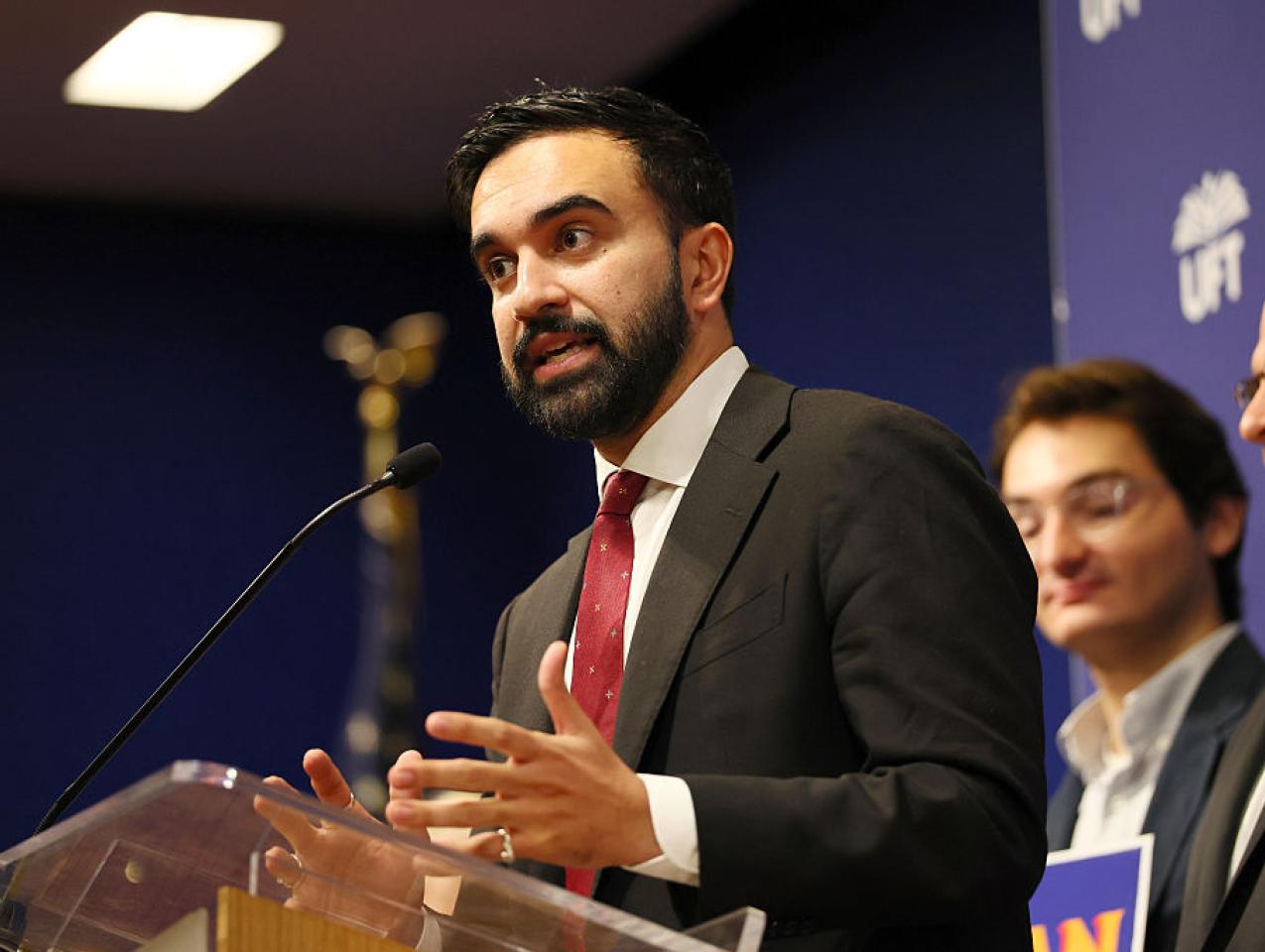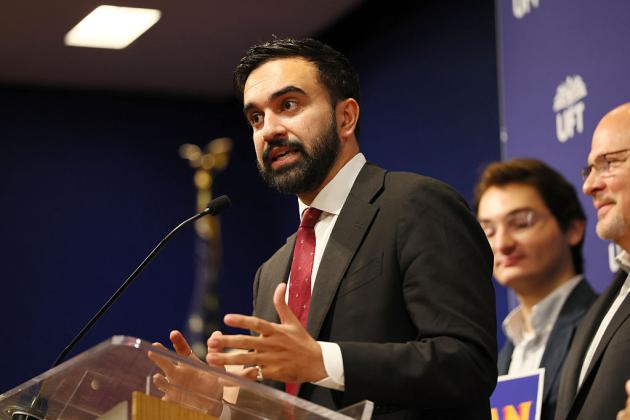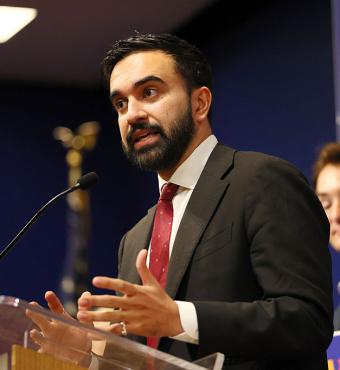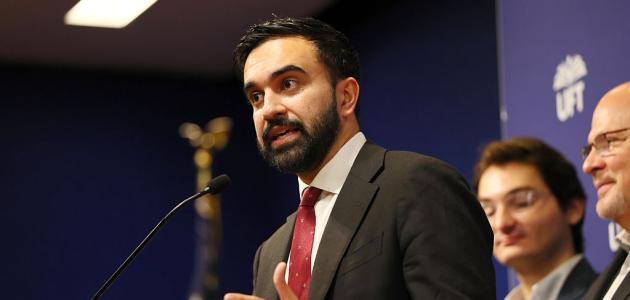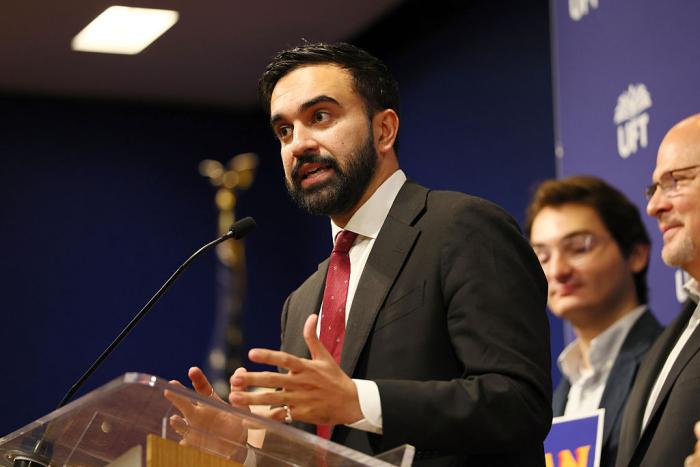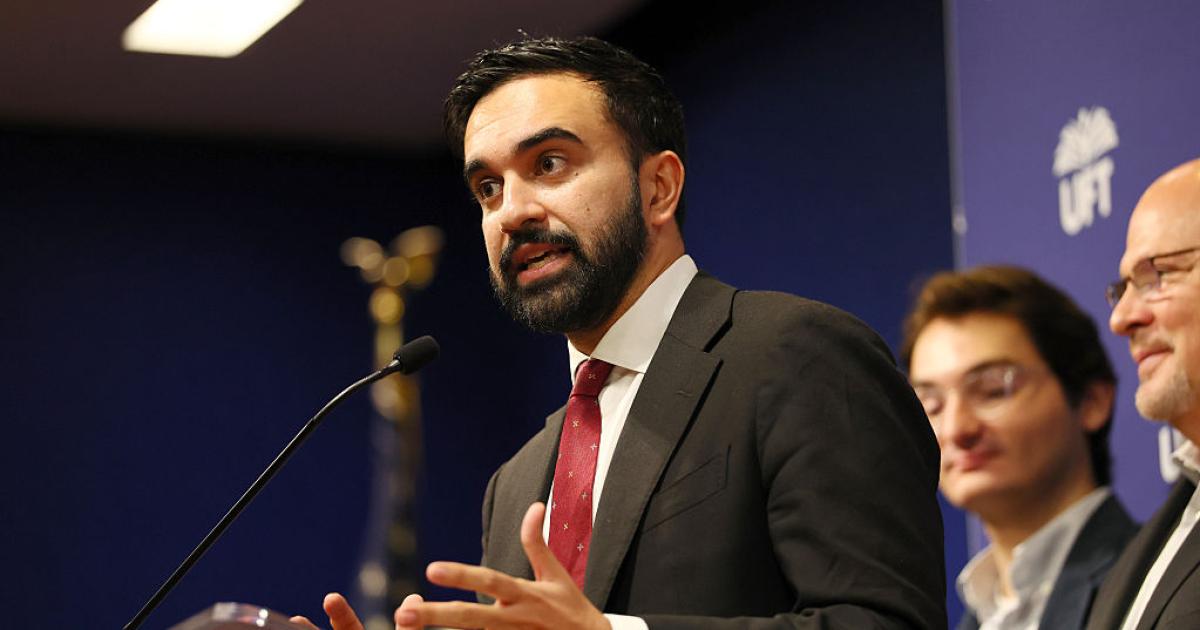- Economics
- State & Local
- Politics, Institutions, and Public Opinion
- Answering Challenges to Advanced Economies
On June 24, a political earthquake hit New York City. Zohran Mamdani, a young democratic socialist, won the Democratic nomination for mayor against the previous front-runner, former New York governor Andrew Cuomo. As recently as late May, oddsmakers had given Cuomo over a 90 percent chance of winning.
Democratic socialism can mean a lot of things. Unfortunately, one of the things it means to Mamdani, as he said in 2021 to a conference of his fellow members of the Democratic Socialists of America, is “the end goal of seizing the means of production.” The good news is that in his campaign, he did not advocate seizing the means of production. The bad news is that he did and does advocate other government interventions that will be very costly. I consider five: (1) higher tax rates on high-income individuals and corporations; (2) tighter rent control combined with subsidies for government housing; (3) an increase in the minimum wage, in steps, to $30 an hour in 2028; (4) government-run grocery stores; and (5) government-subsidized day care combined with a huge boost in costs. I don’t bother asking how socialist they are. Instead, I address their likely effects. The five proposals I examine here, if implemented, would have mainly negative effects, some of them large. A related question is “How honest has Mamdani been in laying out his proposals?” The answer is “Not very, especially on taxes.” Finally, I’ll end by giving Mamdani a little credit for advocating getting the government out of one aspect of people’s lives.
Tax increases and funny math
New York City already has stiff tax rates on individual income, even for people with modest income. For married people filing jointly, the rate is 3.078% for taxable income up to $21,600; 3.762% on taxable income between $21,600 and $45,000; 3.819% on taxable income between $45,000 and $90,000; and 3.876% on taxable income over $90,000. This means that a married couple making $100,000 in taxable income, a modest income if both are working, pays $3,651.60 in New York City income tax. That might sound small, but that’s on top of stiff New York state taxes and federal taxes.
Mamdani says he wants to make life better for middle-income city residents. He could do so by cutting their tax rates by, say, 1 percentage point. Instead, he wants to keep their tax rates at their current level.
His proposal is to pile a 2-percentage-point tax increase on NYC residents with taxable income of $1,000,000 and up.
Mamdani has been less than honest in describing his tax. On the Breakfast Club podcast on June 11 (at the 8:45 point), he stated, “This is about $20,000 a year; it’s a rounding error.” Not quite. He computed the increased tax for someone making $1 million a year. But if they’re making, say, $2 million a year, it’s $40,000. So Mamdani took the number for the person paying the lowest tax increase, $20,000, and talked as if it applied to all higher-income people.
It gets worse. When Erin Burnett of CNN interviewed him, she stated that he was proposing a 51 percent increase in the NYC tax rate of people making $1 million per year or more. Her math was correct. Two percentage points on top of 3.876 percent is 51.5 percent. He responded, “We’re saying that we’re increasing it by 2 percent of what it is right now.” No, he’s not. If he were increasing it by 2 percent of what it is now, that would be an increase of a measly 8 one-hundredths of a percentage point. The rate would rise from 3.876 percent to 3.954 percent.
A lot of people dump on CNN, with some justification, for its left-wing bias, but Burnett not only did the math right, but also raised an important economic point. She started by saying, “I’m not saying cry for” the people who will pay these higher taxes. Myself, I actually do feel bad for them because the vast majority of them earned it. But I see her strategy, which was a good one: it was to get to the point about whether these tax increases will yield the substantial revenue that Mamdani expects. Burnett continued, “When you increase someone’s taxes by 51 percent, aren’t a lot of people going to leave?”
To that question, Mamdani was less than honest yet again. He quoted a study by the Fiscal Policy Institute, but he misstated it in an important way. The study found that tax increases on high-income New Yorkers in 2017 and 2021 did not cause a significant increase in out-migration. Mamdani summarized the relevant result by saying that it found that high-income New Yorkers “leave the city at one-fourth the rate of other income categories.” No, it didn’t. The study was about people leaving the state, not the city. See the difference? The Fiscal Policy Institute (FPI) found that New Yorkers leave the state, not the city, at one-fourth the rate of people in other income categories.
But couldn’t the same results apply roughly to people leaving the city? No. The reason has to do with options. If you leave the state and stay in the country, you have forty-nine other states plus the District of Columbia as potential places to move. But if you leave the city, you have all of those options plus every other part of New York state. So whatever percent of high earners leave New York state in response to higher marginal tax rates, that percent will be higher for residents of New York City.
The FPI study also noted that many of the high-income people who left went to other high-tax jurisdictions such as New Jersey, and Mamdani quoted that finding. The implicit idea seems to be that they weren’t responding to higher tax rates. But that doesn’t follow. They might have seen New York state as superior to New Jersey when tax rates were lower in New York but were willing to pay comparably high tax rates in New Jersey when tax rates in New York rose because they thought they would get a better return on their taxes. But notice that if they were to leave New York state or city when tax rates rise, neither the state nor city governments would get that revenue. So, Burnett’s point, which a lot of supply-side economists agree with, stands. The revenue that Mamdani needs to carry out his other subsidy proposals will not be as substantial as he thinks. Indeed, the tax increases could lose revenue for the city government. If enough people leave in response to the higher tax rate, not only would the city government fail to collect the new taxes on them, but also it would lose revenue it otherwise would extract from them.
Rent control and government housing
Rent control in New York city was introduced as a temporary measure in 1943. Eighty-two years later, it remains. In a previous article, I explained one of the main reasons for rent control’s durability: the asymmetry between insiders and outsiders. Insiders are current tenants. They already have their apartments. So, although keeping rents low will cause landlords to cut corners on amenities and maintenance, the tradeoff for current tenants is usually worth it. Outsiders are people who don’t yet have an apartment and are looking. Many of them would prefer that rents rise 10 percent or more so that they can more easily find apartments. But they, plus landlords, are outvoted by the insiders.
Freezing rents, as Mamdani advocates, would make the situation worse. Current rent controls already discourage new construction. Freezing rents at their current level rather than allowing them to climb at the rate of inflation would discourage new construction even more. Moreover, the number of rental units is not fixed. Landlords can take them off the market and live in them themselves or let relatives or friends occupy them.
We’ve seen this movie before. The Wall Street Journal noted in its editorial “How Democratic Failure Made Mamdani,” June 27, 2025:
In 2019 then-Gov. Andrew Cuomo signed a law that restricted landlords’ ability to raise rents to pay for renovations and “de-regulate” rent-stabilized units, which account for more than 40% of the city’s rental housing. Landlords responded by removing tens of thousands of units from the market.
It’s possible that Mamdani understands these effects. That would explain why he wants to spend tax money on 200,000 “union-built, rent-stabilized homes” over ten years. He claims that these will be “permanently affordable.” Would the government run them? Given his desire for seizing the means of production, it’s almost a given that, having spent taxpayer funds on the housing, he would want the government to keep the housing. If so, NYC would get yet another taste of the joys of public housing.
There’s one little piece of good news here. Mamdani would “end the requirement to build parking lots.” Some serious research shows how costly such requirements are relative to benefits.
Minimum wage
Mamdani proposes to raise NYC’s minimum wage, currently $16.50 per hour, to $20 per hour in 2027, $23.50 in 2028, $27 in 2029, and $30 in 2030. If inflation averages 3 percent annually from now until 2030 (and 3 percent is probably an overestimate), $30 in 2030 would be the equivalent of $25.87 today. That would be a 57 percent increase in the real minimum wage. Such a high legislated wage would put a lot of workers out of work. Remember that the minimum wage law doesn’t guarantee workers a job at that wage. All it guarantees is that if you get a job, it will pay at least the minimum wage. But it is precisely the fact that the job must pay the minimum that makes lower-skilled employees less likely to get jobs. A large fraction of the labor force started at a low wage, and it was these entry-level jobs that gave them the chance to acquire skills and earn higher wages later. Mamdani’s stiff minimum-wage proposal would get in the way of this natural transition, making life much harder for the relatively unskilled. Mamdani wants people not to be pushed out of NYC by the high cost of living. But his own minimum-wage proposal would cause a significant fraction of the labor force to leave the city for a more friendly work environment.
Grocery stores
Mamdani advocates having the government start five grocery stores, one in each of NYC’s five boroughs. He estimates that doing so will cost $60 million. He doesn’t make clear whether it’s per year or one-time. It’s probably per year. Why? Because his own campaign statement says that the stores “will buy and sell at wholesale prices.” If you’re selling at the same price you paid, you’re going to lose money on every item.
Consider the larger context. One of the huge retail successes in the last few decades is Walmart. Walmart is good not only for its stockholders but also for consumers. Go through the aisles of your local Walmart, as I occasionally do, and you are unlikely to see Daddy Warbucks. No, you’ll see people who are stretching their food dollars out of necessity. One economist who has recognized the enormous benefits of Walmart is Jason Furman, who was the chairman of the Council of Economic Advisers under President Obama. In 2005, he wrote:
Plausible estimates of the magnitude of the savings from Wal-Mart are enormous—a total of $263 billion in 2004, or $2,329 per household. Even if you grant that Wal-Mart hurts workers in the retail sector—and the evidence for this is far from clear—the magnitude of any potential harm is small in comparison. One study, for example, found that the “Wal-Mart effect” lowered retail wages by $4.7 billion in 2000.
Whatever benefits Mamdani’s five grocery stores create will pale in comparison.
George Mason University economist Donald Boudreaux ended his terse, fact-filled analysis of Mamdani’s grocery store proposal with a colorful analogy:
To identify American grocery shoppers, of all people, as being in special need of a subsidized grocery service is as ludicrous as identifying Gisele Bündchen as a woman in special need of a subsidized dating service.
No free day care
Mamdani advocates what he calls “no-cost child care.” What he really means is zero-price child care. He would subsidize child care so that parents would pay nothing. Day care would still cost, but the costs would be borne by taxpayers instead of parents. Moreover, he would purposely increase its cost. He advocates raising wages of child care workers to equal the pay of public-school teachers. Journalist Liz Wolfe of the Reason Foundation estimates that this one measure would approximately double day care workers’ wages. So, if truth in advertising were required for political campaigns, Mamdani’s proposal would be titled “more costly day care.” But that doesn’t have quite the same ring as “no cost.”
Taking it to the streets
While I have been very critical of Mamdani’s tax-and-spend proposals, I would be remiss if I didn’t mention one important way in which he wants to reduce government intrusion. Although he didn’t mention it in his campaign platform, Mamdani has advocated decriminalizing prostitution. That would make it safer for both buyers and sellers of sex services. Prostitutes would be free to advertise and establish reputations and would face less need to market their services on the street. They would also have less need for pimps. Clients would also be less likely to pick up sexually transmitted diseases. That means that there is at least one area for which Mamdani does not advocate “seizing the means of production.”







